Overview

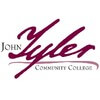

Brightpoint Community College
Chester, VA, USA
Public
2 Year
Overview
John Tyler Community College is a public, 2-year institution with campuses located in both Chester and Midlothian, Virginia, and a Nursing Education Center in Richmond. John Tyler offers over 60 associate degree and certificate programs, the majority of which are technical and career-oriented and utilize state-of-the-art classrooms and labs to promote experiential learning. The college maintains transfer articulation agreements with 35 other colleges and universities that guarantee admission to eligible students.
Average Net Price:
$6,810
Campus Setting:
Suburb or town
Tuition, Cost & Aid
Affordability & Cost
Average Net Price
$6,810
Discover how military service can help you pay for college
Explore Military PathwaysTuition
| In-State Tuition In-state tuition is the tuition charged by institutions to those students who meet the state's or institution's residency requirements. In-district tuition is the tuition charged by the institution to those students residing in the locality in which they attend school and may be a lower rate than in-state tuition if offered by the institution. | $4,938 |
| Out-of-State Tuition Out-of-state tuition is the tuition charged by institutions to those students who do not meet the state’s or institution’s residency requirements. Out-of-district tuition is the tuition charged by the institution to those students not residing in the locality in which they attend school. | $10,941 |
Additional Costs
| Books and Supplies | $1460 |
Average Net Price By Family Income
Income
Average Amount
< $30k
$4,337
$30k - $48k
$5,549
$48k - $75k
$6,882
$75k - $110k
$8,959
$110k+
$11,113
Financial Aid: visit page
Aid & Grants
Students Receiving Gift Aid Percent of undergraduate students awarded federal gift aid. Federal gift aid includes any grant or scholarship aid awarded, from the federal government, a state or local government, the institution, and other sources known by the institution. Students Receiving Grants Percent of undergraduate students awarded grant aid. Grant aid includes any grant or scholarship aid awarded, from the federal government, a state or local government, the institution, and other sources known by the institution.
21%
Average Aid Per Year
$5,515
21%
Average Federal Grant Aid Per Year
$5,209
Average Institution Grant Aid Per Year
$1,552
Students receiving state aid Students receiving federal aid
42%
Average State Grant Aid Per Year
$1301
40%
Average Federal Grant Aid Per Year
$5,209
Total Needs Based Scholarships/Grants Total amount of grant or scholarship aid awarded to all undergraduates from the federal government, state/local government, the institution, and other sources known to the institution.
$11,524,693
Total Non-Need-Based Scholarships/Grants
$229,356
Student Loans
Students Borrowing Loans Loans to students - Any monies that must be repaid to the lending institution for which the student is the designated borrower. Includes all Title IV subsidized and unsubsidized loans and all institutionally- and privately-sponsored loans. Does not include PLUS and other loans made directly to parents.
7%
Average Loan Amount Per Year
$4,828
Average Debt at Graduation The median federal debt of undergraduate borrowers who graduated. This figure includes only federal loans; it excludes private student loans and Parent PLUS loans.
$5,500
Median Monthly Loan Payment The median monthly loan payment for student borrowers who completed, if it were repaid over 10 years at a 5.05% interest rate.
$99
Students receiving federal loans
6%
Average Federal Loans Per Year
$4,775
Average Other Loans Per Year
$3,549
Admissions
Key Admissions Stats
Institution Type
Public
- Not for Profit
- Coed
Need Aware
This school may consider an applicant’s financial situation when deciding admission
Level of Institution
2 Year
Campus Setting
Suburb or town
525
Transfer Students Admitted
Admissions Requirements
Transcript
No
Test Optional
No
SAT Subject Tests
Yes
AP Course Credit
Yes
Dual Enrollment
Yes
Admitted Student Stats
In-State Students
100%
Out-Of-State Students
5%
Students Enrolled By Household Income
< $30k
119
$30k - $48k
75
$48k - $75k
58
$75k - $110k
16
$110k+
15
Admissions Resources
Admissions: visit page
For Students with Disabilities: visit page
For Veteran Services: visit page
Academics
Key Academic Stats
Highest Degree Offered
Associate's
Total Number of Students
8,792
Total Number of Undergrads
8,792
Student:Faculty Ratio
22:1
US National: 21:1Non Traditional Learning
- Online Classes
- Online Undergrad Degrees
- Summer Sessions
Learning Options
- Honors Program
Degrees and Majors
MAJORS
31
Majors
| A B M D | |
|---|---|
| ARCHITECTURE AND RELATED SERVICES | |
| BUSINESS, MANAGEMENT, MARKETING, AND RELATED SUPPORT SERVICES | |
| COMMUNICATION, JOURNALISM, AND RELATED PROGRAMS | |
| COMPUTER AND INFORMATION SCIENCES AND SUPPORT SERVICES | |
| CONSTRUCTION TRADES | |
| CULINARY, ENTERTAINMENT, AND PERSONAL SERVICES | |
| EDUCATION | |
| ENGINEERING | |
| ENGINEERING/ENGINEERING-RELATED TECHNOLOGIES/TECHNICIANS | |
| FAMILY AND CONSUMER SCIENCES/HUMAN SCIENCES | |
| HEALTH PROFESSIONS AND RELATED PROGRAMS | |
| HOMELAND SECURITY, LAW ENFORCEMENT, FIREFIGHTING AND RELATED PROTECTIVE SERVICES | |
| LIBERAL ARTS AND SCIENCES, GENERAL STUDIES AND HUMANITIES | |
| MULTI/INTERDISCIPLINARY STUDIES | |
| PSYCHOLOGY | |
| VISUAL AND PERFORMING ARTS |
Faculty Overview
Gender
Male
Female
US National: 42%
US National: 48%
Ethnicity
African American
Asian/Pacific Islander
White
Hispanic
Multi-Racial
Campus Life
Key Campus Stats
Student Gender
Male
Female
42%
US National: 44%58%
US National: 56%Residency
In-State Students
100%
Out-Of-State Students
5%
Size of Town
Suburb or town
US States Represented
18
Countries Represented
Ethnicity
African American
21%
Asian/Pacific Islander
4%
Hispanic
12%
White
54%
Multiracial
5%
Unknown
3%
Percent of First Generation Students
42%
Student Organizations
27
LGBTQIA Student Resource Groups
No
On Campus Women's Center
No
Cultural Student Resource Groups
No
Housing
On-campus living required of freshman
No
Disability Housing Available
No
Athletics
Varsity Athletics Conference Primary
Not applicable
Sports Club
2
Campus Safety
24-HR security patrol
Yes
Campus emergency phones
Yes
24-HR escort safety rides
No
Mobile campus emergency alert
No
After Graduation
Post Grad Stats
Average Salary
6 years after graduation
$36,800
Average Debt at Graduation The median federal debt of undergraduate borrowers who graduated. This figure includes only federal loans; it excludes private student loans and Parent PLUS loans.
$5,500
Loan Default Rate
12%
National: 8%
Median Monthly Loan Payment The median monthly loan payment for student borrowers who completed, if it were repaid over 10 years at a 5.05% interest rate.
$99
REVIEWS
Read What Students Are SayingI have enjoyed many of my classes. I am sure, however, that neither my Biology 101, nor my math, will stick with me.
Cathy from Crewe, VA
John Tyler is a good choice for higher learning at a low cost.
John Tyler should offer more multiples of the same class at different times.
John Tyler allows you to work on higher education while maintaining a life outside of higher education.
John Tyler should offer more multiples of the same class at different times.
John Tyler allows you to work on higher education while maintaining a life outside of higher education.
Amanda
All the teachers i had are great. not scary as people may think
Ashley from Richmond, VA
I am in the Visual Communications program and I absolutely love it! The instructors challenge you to do your best, and work with you at your own pace so you can understand the assignment, even if you need tutoring. I'm working on assignments I've never done before, like 3D sculptures and video commercials.
Jennifer
Similar Colleges
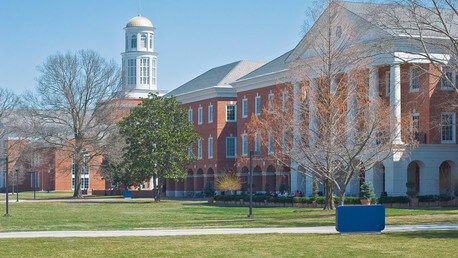 Newport News, VA
Newport News, VA- Richmond, VA
 Harrisonburg, VA
Harrisonburg, VA Lynchburg, VA
Lynchburg, VA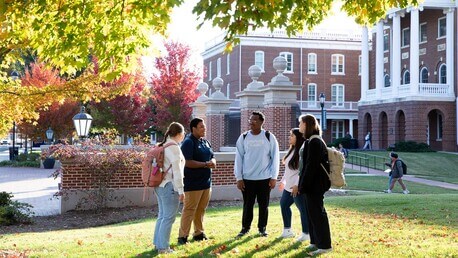 Farmville, VA
Farmville, VA Norfolk, VA
Norfolk, VA Norfolk, VA
Norfolk, VA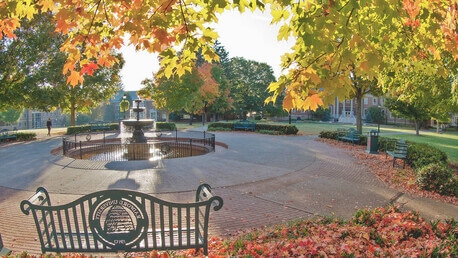 Radford, VA
Radford, VA Ashland, VA
Ashland, VA South Prince George, VA
South Prince George, VA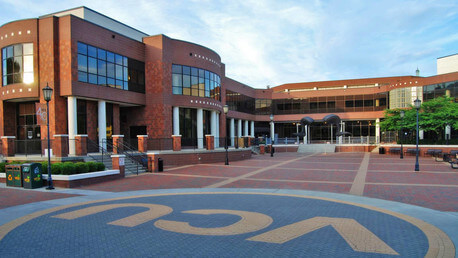 Richmond, VA
Richmond, VA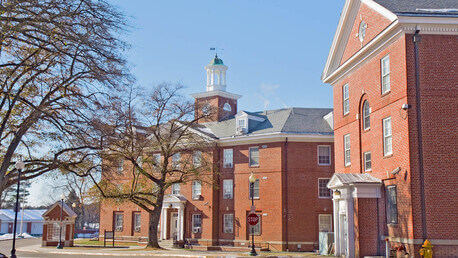 Petersburg, VA
Petersburg, VA
See All
Brightpoint Community College